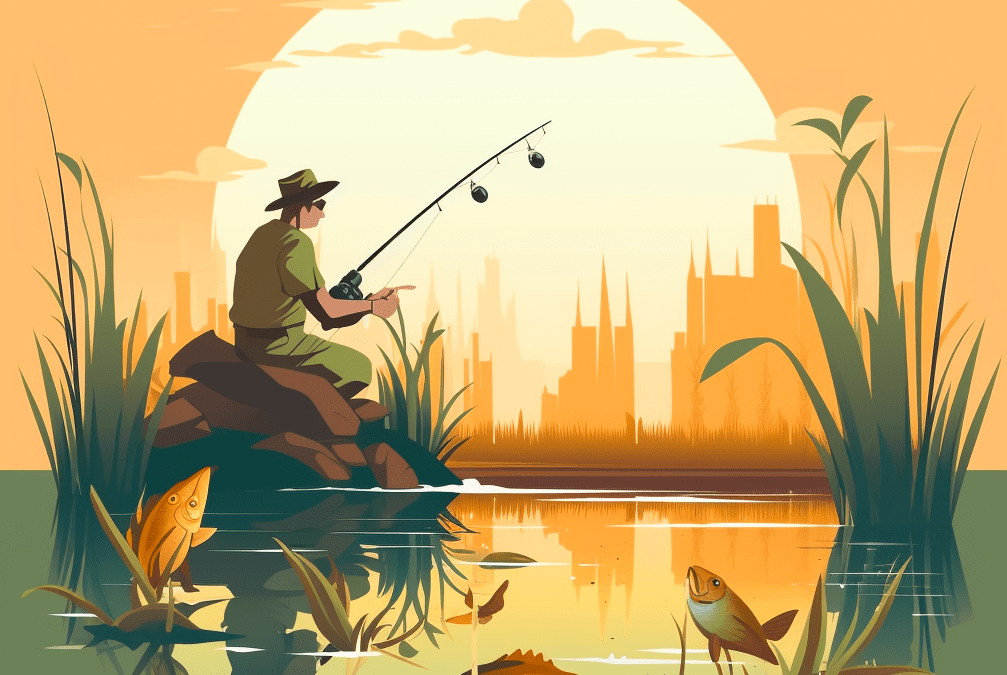Fishing grass for bass is a popular technique among anglers, especially during the summer months. Grass can provide cover and shade for bass, making it a prime location for them to feed and rest. However, it can also be challenging to fish in the grass due to the potential for getting tangled and losing your lure.
One popular technique for fishing grass is using a topwater lure such as a frog or popper. These lures mimic the movement of prey on the surface of the water, and when worked correctly, can entice a bass to strike. It’s important to cast the lure into the pockets and openings in the grass where bass may be hiding. Once the lure lands, give it a few twitches, pauses, and pops to create the illusion of a struggling prey.
Another technique for fishing grass is using a weedless jig or soft plastic bait. These lures are designed to be fished through the grass without getting snagged. A weedless jig can be worked along the bottom of the grass, bouncing and hopping it over the tops of the vegetation. Soft plastic baits can be rigged weedless and fished with a slow and steady retrieve, imitating a worm or other creature crawling through the grass.
It’s important to note that different types of grass require different techniques. For example, hydrilla is a dense, thick grass that requires a weedless lure that can be worked through the vegetation. On the other hand, milfoil is a thinner, more delicate grass that responds well to topwater lures.
When fishing in grass, it’s important to keep your line tight and be ready for a strike at any moment. Bass can hit a lure hard and fast, so it’s essential to have a good hookset and reel in the fish quickly to avoid losing it in the grass. With a little practice and patience, fishing grass can be a rewarding and successful technique for catching bass.
In addition to the techniques mentioned above, there are a few more things to keep in mind when fishing grass for bass. One important factor is water clarity. If the water is clear, it’s best to use more natural-looking lures that closely resemble the prey found in the area. If the water is murky, brighter and more visible lures may be more effective at attracting fish.
Another factor to consider is the depth of the grass. If the grass is shallow, a topwater lure may be the best choice. However, if the grass is deeper, a weedless jig or soft plastic bait may be more effective at reaching the fish.
It’s also important to pay attention to the weather. On sunny days, bass may retreat deeper into the grass to find shade and cooler water. On cloudy or overcast days, they may be more active and willing to come to the surface to feed.
When fishing grass, it’s helpful to have a good understanding of the area you’re fishing. Look for drop-offs, changes in depth, and other features that may attract fish. If you’re fishing from a boat, use your sonar to locate underwater structures and areas where bass may be hiding.
Overall, fishing grass for bass can be a fun and rewarding experience. It requires patience, skill, and a good understanding of the fish and their habitat. With the right techniques and a little bit of luck, you can catch some impressive bass in the grass.
Advance Grass Fishing For Bass
When it comes to advanced techniques for fishing grass for bass, there are a few things to keep in mind that can help you catch more and bigger fish. Here are some tips to take your grass fishing game to the next level:
- Use a variety of lures: While topwater lures and weedless jigs are effective choices for fishing in grass, don’t be afraid to mix it up and try other lures as well. Spinnerbaits, crankbaits, and swimbaits can all be effective at catching bass in grass, depending on the conditions.
- Experiment with different retrieves: Varying your retrieve can often be the key to triggering a strike from a finicky bass. Try a slow and steady retrieve, a stop-and-go retrieve, or even a twitch-and-pause retrieve to see what works best.
- Pay attention to the edges: The edges of a grass bed can often be the most productive areas. Look for points, pockets, and other irregularities in the grass where bass may be lurking. Cast your lure around these areas and work it back to the boat slowly and methodically.
- Use scent: Adding a scent to your lure can help attract bass that may be hesitant to bite. Garlic, crawfish, and other scents can all be effective at drawing in fish and triggering a strike.
- Fish the shadows: When the sun is high in the sky, look for areas where the grass is casting a shadow on the water. These shaded areas can be cooler and more comfortable for bass, making them more likely to be there.
- Use electronics: If you’re fishing from a boat, use your electronics to locate underwater structures and areas where bass may be hiding. Use your sonar to locate drop-offs, ledges, and other features that may be holding fish.
- Be patient: Fishing in grass can be frustrating at times, especially if you’re getting snagged frequently. However, it’s important to be patient and persistent. Keep casting and trying different techniques until you find what works.
By using these advanced techniques, you can increase your chances of catching more and bigger bass in grass. Remember, fishing is a learning process, so don’t be afraid to experiment and try new things until you find what works best for you.

